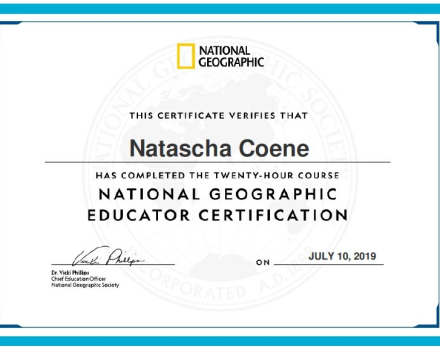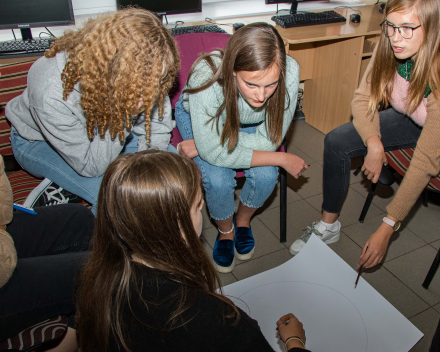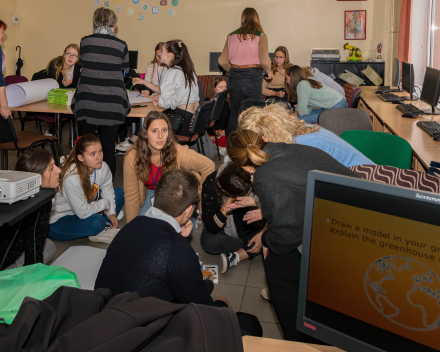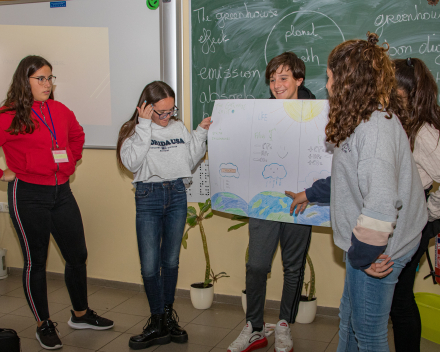- Home
- Exploring the world of the National Geographic Education Community
Exploring the world of the National Geographic Education Community
25/01/2021 - 22:12
by Natascha Coene
#TeacherStrong
The National Geographic Society is a very well-known organization.
Without any doubt you have already enjoyed watching its TV programmes or read its monthly magazine.
All wonderful resources.
Within the educational field National Geographic has also won its spurs with National Geographic Learning (https://eltngl.com/), a branch focussing on text books for English language learning, webinars, blogs and digital resources to bring the world to all classrooms. National Geographic is everywhere.
But wait, there is more! You also have the National Geographic Education Community.
About two years ago I got acquainted with the National Geographic Community.
If you surf to https://www.nationalgeographic.org and click on EDUCATION in the top menu a whole world of educational resources will be opened. You are immediately offered a search engine to look for specific topics.
Geography and sciences are prominent themes, ideal for CLIL classes, but you can easily find human interest stories as well. Either you can scroll down or click on the subcategories of EDUCATION to find more.
One of the items offered is ‘Professional Development’. Although all courses proposed are embedded in an American context, they offer some surprising ideas. And they are all for free.
I started with the National Geographic Certified Educator course. It is a basic course consisting out of three phases.
In the first phase you are emerged in the National Geographic philosophy. This philosophy is worked out really well on different levels, all having in mind to encourage youngsters to explore the world in a respectful way and to motivate them to take responsibility.
In the second phase you have to implement two activities in the spirit of their philosophy into your own lessons and in the third phase, the capstone project, you have to report on one of these activities, creating a short video to do so.
My own capstone project was titled Human Impacts on Oceans and their Marine Ecosystems in the World and at Home. I started from a story in our textbook about shark finning and then added National Geographic materials. Especially including the different levels makes the project captivating, since a topic that is normally situated far away has to be brought to the students’ own doorstep. And suddenly what they learn makes more sense because they understand their own environment better.
It was the first time I had to edit a film with scenes from the class, pictures and comments explaining what it was all about. A lot of the other participants also thought this to be the most nerve wrecking part. It is reassuring that you are part of a group and you can very easily discuss your problems with the others enrolled in the course.
This is something that is always part of the National Geographic Development courses. From the very beginning you have to talk to each other, comment on each other’s submissions and discuss your views. All this has to be done according to a guideline stressing that people always have to remain civil.
If you have fulfilled all the requirements and collected enough course credits you receive a certificate.

This course is organised at regular intervals and if you want to, you can join a smaller group that is guided by a mentor who supports you and gives advice.
The next course starts on February 15 and ends on April 24. If you would like to have a look at this winter course, click on the this enrollment link to find out about all the details.
After the Educator course I also took some shorter courses. These I could take at my own pace, e.g. Understanding Illegal Wildlife Trade and Storytelling for Impact in Your Classroom: Photography.
For other courses I had to enrol again and complete them according to a stricter schedule. These courses, like Collecting Data to Explore Plastic Pollution in Our Communities, aim at not only passing on information but also on creating lesson plans. In all courses the assignments that you have to submit are subjected to peer evaluation.
You will also have to evaluate a number of lesson plans yourself. These lesson plans all have to be written within the context of the National Geographic philosophy.
What I think to be great about these courses is that they focus on making students take action.
I used the materials of ‘Teaching Global Climate Change in Your Classroom’ to teach a class during an Erasmus+ exchange in Lithuania. Students from different nationalities enjoyed the activity and insisted on taking home the models they had created to explain about the global climate change.
The National Geography Community used to have a closed space to pass on messages, but as of January 1, 2021 their key channels were moved to social media: @NatGeoEducation both on Facebook and Twitter.
Last but not least National Geographic also has its own YouTube channel with an immense load of clips, short ones and longer ones. There is definitely a lot to explore.
_________________
Biography
Natascha Coene is a teacher of English at ‘t Saam – campus Aloysius, Diksmuide. At this secondary school she teaches third stage students.
She loves to connect her students to the outside world, therefore she involves them among others in Erasmus+ programmes, email exchanges and Skype meetings whenever possible.
Natascha is also a BELTA Board member.



